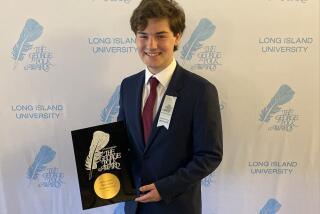New hope for embattled STAP cell researchers?
- Share via
Just hours after Japanese investigators announced findings of fabrication and misconduct in a highly criticized “acid bath” stem cell study, scientists in Hong Kong said they had partly succeeded in reproducing the controversial experiment, but without acid.
Kenneth Ka-Ho Lee, a professor and stem cell scientist at the Chinese University of Hong Kong, said Tuesday that he was shocked speechless when he and colleagues managed to create cells that appeared similar to the so-called STAP cells described in the much-discredited research papers.
“I thought one of my students was playing an April Fool’s Day trick on me,” Lee said. “I was astounded.”
Lee, who has been openly critical of the original STAP cell research, has been blogging his attempts to reproduce the authors’ results on ResearchGate, a networking website for scientists.
Lee initially attempted to reprogram mouse blood cells into pluripotent stem cells — cells capable of transforming into most any other type of cell — using the original study’s protocol, but failed.
When one of the original study’s authors, Dr. Charles Vacanti of Harvard affiliated Brigham and Women’s Hospital in Boston, released another protocol for the experiment, Lee said he would try that one as well.
The Vacanti recipe for “stimulus triggered acquisition of pluripotency,” or STAP cells, calls for soaking the cells in an acid bath, but also passing them through extremely narrow glass tubes, or pipettes. (The diameter of the narrowest glass tubes is about 2.5 times the size of the cells themselves.)
Vacanti, and co-author Haruko Obokata, of the RIKEN research institute in Japan, argued in two Nature studies that these near-fatal stresses on the cells somehow induce pluripotency.
Lee said Tuesday that as he and his colleagues attempted to reproduce the experiment along Vacanti’s guidelines, they found that the acid was killing the cells at a high rate. They decided to conduct a negative control experiment in which they exposed some cells only to the narrow pipettes, and not the acid.
At the end of the experiment, Lee and his lab staff examined the surviving cells, searching for signs that the genes associated with pluripotency had turned on.
In the acid-washed cells they found nothing, but in the non-acid cells they saw a “spike” in expression levels for two of the genes.
“They expressed really highly,” Lee said. “It was a shock. I wasn’t expecting that at all.”
Lee said the experiment must be repeated again before any conclusions can be made. “We still don’t know whether STAP cells really exist. We need to keep going. If it works again, this could mean a lot of things to a lot of people,” Lee said.
Stem cell experts who were not involved in the original study, or Lee’s follow-up, remained skeptical.
Paul Knoepfler, a stem cell researcher at UC Davis who has blogged extensively on the STAP cell controversy, said Lee’s findings were definitely worth following up, but cautioned against making any broad conclusions.
The results, he said, were very preliminary and limited in scope.
“Injured or dying cells may exhibit random changes in gene expression that can be difficult to interpret,” Knoepfler said. “These new results absolutely do not prove that STAP is real at this point.”
Knoepfler noted that in Lee’s experiment, the non-acid treated genes showed an eight- to tenfold increase in two pluripotency related genes. He suggested he would expect to see more in actual STAP cells.
“Typically during other forms of induced pluripotency a whole slew of dozens of stem cell genes are turned on and can increase by 100-fold or more,” Knoepfler said. “For STAP cells to be real they would also have to grow, differentiate, form a tumor called a teratoma, and be able to contribute to an embryo.”
The release of the original studies in late January generated numerous headlines and struck many as a long-awaited breakthrough in the development of stem cells.
A simple technique for producing stem cells could have an enormous effect on medicine. Stem cells could be used to create organ replacement tissues that the body would not reject, as well as treat conditions as varied as spinal cord injuries and blindness, scientists say.
Excitement over STAP cells cooled very rapidly, though, when critics raised questions about images and text used in the Nature studies. As a result of the criticism — as well as a call from one study author to retract the paper — officials at RIKEN initiated in investigation.
At a news conference Tuesday, RIKEN officials said they had uncovered two instances of research misconduct and placed much of the blame on Obokata. These problems, however, did not necessarily mean that STAP cells did not exist, the officials said.
“Verification of the STAP phenomena can only be done through scientific inquiry by third parties,” RIKEN’s investigation panel concluded.







